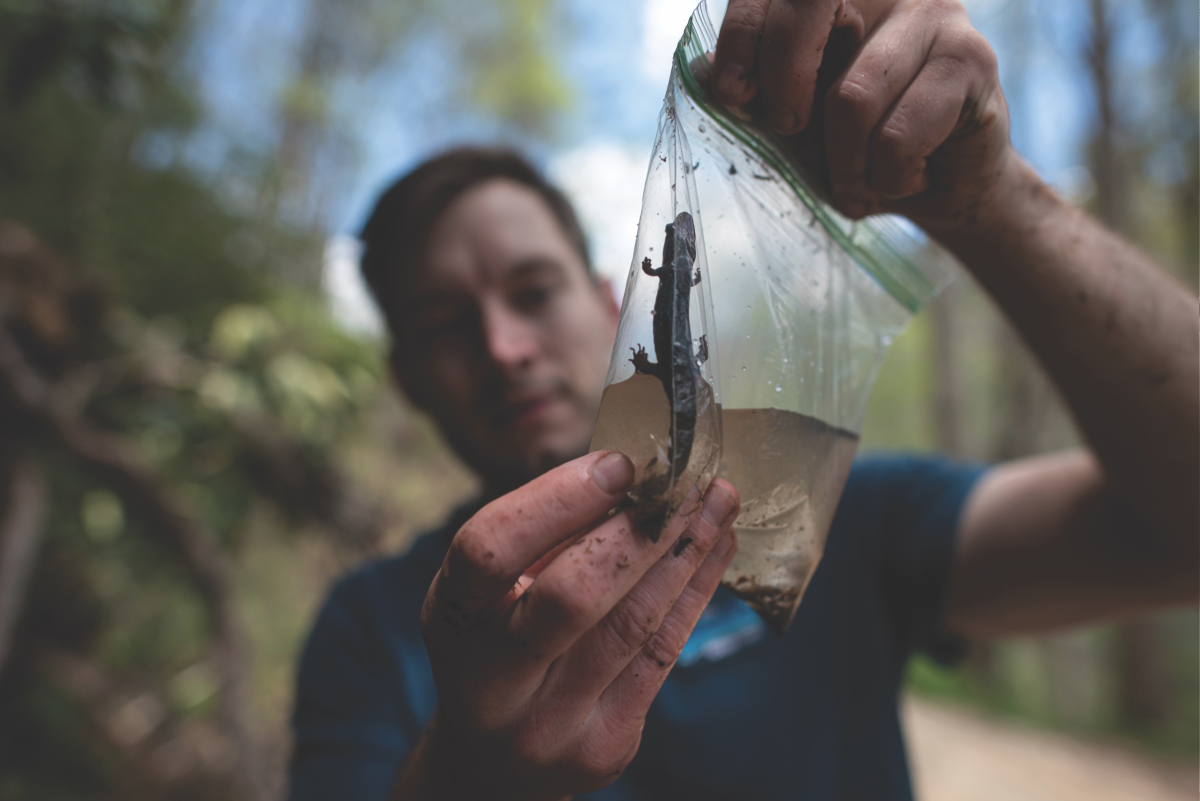Admin
To the editor:
Oh yeah, then there are the children.
How many bureaucrats does it take to educate a child? It must take more than seems to make sense. In Raleigh, we have 800 that are on the payroll of the Department of Public Instruction. The budget for this group of non-teaching employees is $153,000,000 (The well-paying job of one of them is to order magazines.)
Then we have to add The State Board of Education, 115 local School Boards, School Superintendents and Associate Superintendents with their staffs, Principals and Assistant Principals; then we have Psychologists, Resource Officers, Human Resource Directors, Guidance Counselors, Water Quality Directors, Staff Development Directors, Cultural Arts Program Directors, Federal Programs Directors, Community Schools Program Directors, Child Nutritionists, Nurses, Safe Schools Program Directors, Special Needs Program Directors, Public Relations Directors, Migrant Education Program Directors and social workers.
All of this before a single child encounters a single teacher. Gee, and I thought education was about the children.
It’s generally an accepted fact that in most states only 40 to 50 cents of every dollar spent on education actually reaches the classroom. Gee, and I thought education was about the children.
It’s not hard to understand why Catholic Schools, Christian Schools, private schools and charter schools (both public and private) deliver a far better product with much higher graduation rates and test scores at about half the cost. The teachers are not hindered by the performance stifling effects of layers and layers of bureaucrats administering regulation upon regulation. The Principal runs the school and the teachers teach the children. Maybe in these schools it really is about the children.
Is it any wonder that all of these well paid, non-teaching bureaucrats and the politicians that are handsomely supported by the unions wage fierce battles to maintain the status quo and keep out other options for the parents? After all, who is hurt by this self-serving cartel? It’s only the children.
Beverly Elliott
Clyde, NC
For both teachers in the classroom and local administrators, this is shaping up to be the most challenging budget year in North Carolina history. At times like these, those of us who value a quality education system will be left to rely on the expertise of these professionals to do more with less. There’s simply no other option.
Last week we published a story detailing the budgetary challenges Haywood County schools will face in meeting the needs of its students as it deals with a loss of potentially $4 million. As most teacher assistants disappear, textbook money is cut drastically, and more local dollars will have to go toward buses — along with myriad other cuts — there’s just no need for hand-wringing.
Haywood Assistant Superintendent Bill Nolte, discussing the state House budget proposal and what might happen locally, summed it up very matter of factly:
“I don’t think we can, in good conscience, expect the (county) commissioners to come up with revenue that they don’t have,” said Nolte. “It’s impractical, in my professional opinion, to say to our county commissioners, ‘Hey, the state cut all of this; fund it.’ There is a worldwide economic crisis, and to our knowledge, our commissioners do not have new revenues that would make up for any state cuts to any agencies.”
What it comes down to is this: teachers, already strapped for resources and perhaps overworked, will be asked to do more with less. Especially those working with young children in first, second and third grades, where teacher’s assistants are destined to be cut. Haywood has a pot of money it will use to try to keep assistants in the younger grades for at least one more year, but in many counties those assistants will disappear.
This is happening at the same time money for the More at Four pre-K program is being cut, meaning many children will enter kindergarten less prepared.
As all the peripheral dollars are being cut, perhaps this is an opportunity for certified teachers — those actually doing the hands-on work in the classrooms — to get more attention. Studies have shown that teachers in all those countries that perennially outscore us on all those standardized tests are treated much better than teachers in the United States. They earn more, are treated more like professionals, and more of the good ones tend to remain in the profession for longer.
For many years there has been teacher shortage in this country. That’s because it hasn’t been a career that enticed the best and the brightest. Anyone who wonders why Finland, Japan or Korea outscore us need only look at who becomes teachers in those countries. When we take the same approach, there’s little doubt many of our education problems will disappear.
Money will be tight in public education for years to come as we struggle through this recession. Perhaps it is a good time to focus on teaching and use the resources we have to entice the brightest among our college students to spend their lives in the public school classroom.
The Haywood County Veterans Office and the Haywood County Veterans Council are calling for veterans to participate in the Memorial Day Parade, scheduled for 1 p.m. on Monday May 30th, in Canton.
The parade will feature several National Guard and Reserve Units, a color guard, Civil War reenactors, and veterans’ organizations. ROTC units from Pisgah and Tuscola High Schools are scheduled to participate.
828.452.6634.
A Citizen’s Constitutional Workshop will be held in Franklin Friday, May 20, at The Fun Factory on U.S. 441 South.
Experts from the John Locke Foundation and N.C. History Project will be at the event, which lasts from 1 p.m. to 4:30 p.m.
The event is free, but pre-registration is strongly suggested. Mountain Patriots Tea Party and FreedomWorks are hosting the event.
919.828.3876.
Cecil Bothwell, who announced his congressional bid in March, will not run as an Independent but instead run in the 2012 Democratic primary.
“I’ve heard from hundreds of people, from Western North Carolina to Washington, D.C., who believe the most likely path to success is up the middle instead of trying for an end-run,” Bothwell said in explanation. “Groups are smarter than individuals, and I’m following advice gleaned from a wide network of friends and supporters.”
Bothwell is challenging incumbent Congressman Heath Shuler, D-Waynesville. Some political experts believed Bothwell could potentially erode Shuler’s Democratic base by running as an Independent, making for a tough re-election bid for the three-term congressman.
Bothwell is a former editor for the Asheville-based newspaper Mountain Xpress and is currently an Asheville city councilmember.
Donate food to the Manna Food Bank Summer Sack program from 9 a.m. to 7 p.m. on May 12 and help feed Haywood County children this summer.
Collections, organized by Keller Williams, will be taken in Waynesville at K-Mart and Bi-Lo on Russ Avenue, and at Food Lion in Canton and Clyde. All foods need to be in pop-up cans or individual boxes, portioned for each child.
For a taste of fun and history, visit The Blackberry Jam from 1 p.m. on Saturday, May 14, at the Macon County Fair Grounds.
The Macon County Historical Society has lined up a variety of events to commemorate the 150th anniversary of the Civil War and the role that Macon County played. This will be the first of a series of events and lectures to be held over the next four years.
The jam will showcase local and regional talent from acts like Nathan Parrish, The White Sisters, Mickey, Pat and Trisha Raby, Barbara Duncan, David Patterson, the Community Choir and the Good Old Boys from Clover Creek.
Gary Carden and the Ammons Sisters will tell Appalachian stories, while Gregg Clark will offer a chilling ghost story.
Square dancing, metal and wood working and shoe making demonstrations will be held throughout the day, and the girls from the Rabun County 4-H Club will be making corn shuck dolls for the children. Food vendors will also be on hand to tempt appetites.
Other entertainment will include pony rides and questions and answers with Civil War re-enactors.
Tickets are $5 for adults and $3 for students. Children under 12 are free. 828.524.9758 or email This email address is being protected from spambots. You need JavaScript enabled to view it..
This year’s Dancing With the Mountain Stars event is set to kick off at 6:30 p.m. on Friday, May 20, at the Laurel Ridge Country Club to benefit REACH of Haywood County. Local celebrities will be paired with professional dancers to compete for the coveted title.
The community can support its favorite star by purchasing tickets to the event or by making a donation to their star. Tickets are $100.00 each, and the evening includes dancing, dinner, entertainment and hors d’oeuvres.
The 2011 stars are: Dr. Michael Hogan with Blue Mountain Chiropractic Center, Dr. and Mrs. Charles Thomas with 21st Century Oncology, CeCe Hipps with the Haywood Chamber of Commerce, Gary Lance with LN Davis Insurance, Scotty Setser with Haywood Regional Fitness Center and Pat Smathers, Mayor of Canton, each of whom will be paired with a professional partner.
Money raised will be used to support the various services REACH offers to victims of domestic violence, sexual assault and elder abuse.
828.456.7898.
Southern Gospel group Archie Watkins & Smoky Mountain Reunion will play two shows at 6 and 8 p.m. on May 21 at the Colonial Theater in Canton.
The concerts will benefit Arc of Haywood County, a non-profit organization dedicated to serving those with intellectual and developmental disabilities and their families. They offer training programs and activities, as well as mini-grants for Haywood County teachers of special needs students, specialized equipment and financial assistance.
Tickets are $15. 828.452.1980 ext. 300, or visit www.archiewatkins.com.
The Town of Dillsboro is seeking vendor applications for the upcoming Arts and Music festival, which will take place the second Saturday in June. Applications can be found at visitdillsboro.org.
Entertainers and musicians are also needed to play on Saturday nights in Dillsboro throughout the summer.
For information, email This email address is being protected from spambots. You need JavaScript enabled to view it..
Have fun while staying active this summer through a ballroom dance class, held from 6:30 until 7:30 p.m. on Tuesday evenings, May 24 through June 28, at Western Carolina University.
Students will learn several ballroom dance styles, including the waltz, tango, cha-cha, swing and fox-trot, as well as the basics of leading and following. Beginners are welcome, and attendees can come with or without a partner. Comfortable, soft-bottomed shoes are required.
Instructor Heidi Turlington holds degrees in dance education and physical education, and is herself a former competitive dancer and experienced instructor.
Cost of the class is $59. Registration will continue through the first week of classes.
828.227.7379 or visit learn.wcu.edu.
Elementary school-aged children and their families are invited to a free ARTSaturday workshop from 10 a.m. until 12 p.m. on Saturday, May 14, in the Macon County Public Library children’s wing.
Activities include make-and-take percussion instruments, harmony and round singing, a Musical Me mural, and more. ARTSaturday always features live music by keyboardist Lionel Caynon and coloring projects. Children should wear play clothes and come for any part of the session.
The monthly ARTSaturday series is produced by the Arts Council of Macon County.
828.524.7683 or visit www.artscouncilofmacon.org.
Pianist Thomas Uchtmann will perform a concert at 7:30 p.m. on Saturday, May 21 at the Performing Arts Center in Waynesville to benefit the Haywood County Arts Council. A reception will be held after the concert.
Uchtmann will perform a range of works by Brahms, Beethoven, Schubert, Liszt and others.
He was born in Trenton, New Jersey and holds degrees from the Juilliard School of Music and the University of California at Santa Barbara. For over fifteen years he performed with Community Concerts Association and is a professor emeritus of Eastern New Mexico University, where he taught on the piano faculty for 25 years before retiring to Western North Carolina.
Tickets are $17.50 for adults, $8 for students 17 and younger.
828.452.0593
Local writers can hone their skills with summer workshops in poetry and prose at UNC Asheville’s Great Smokies Writing Programs. Classes are open to all interested writers but class size is limited.
Poet Jeff Davis will lead Getting the Muse Back into Gear: A Poetry Workshop, from 6 to 8:30 p.m. on Wednesdays, June 8 to July 13.
Brian Lee Knopp, author of Mayhem in Mayberry: Misadventures of a P.I. in Southern Appalachia, will lead a narrative nonfiction writing workshop at the same time.
Peggy Tabor Millin, author of “Women, Writing, Soul-Making: Creativity and the Sacred Feminine,” will offer a course on memoir writing from 6 to 8:30 p.m. on Tuesdays, June 7 through July 5.
A fiction workshop will be held by Heather Newton, author of Under the Mercy Trees, Thursday evenings from June 9 through July 14.
In-state tuition and fees for five-session courses are $98.33; cost for out-of-state residents is $529.81.
828.251.6099 or visit unca.edu/gswp.
Former Cullowhee resident Marly Youmans, novelist, short-story writer and poet, will return to Sylva at 7 p.m. on Thursday, May 12, to read from her new poetry collection, The Throne of Psyche, at City Lights bookstore.
Youmans is a prolific author whose previous books include Claire, The Wolf Pit, Catherwood, Ingledove, Little Jordan, and Curse of the Raven Mocker. She currently lives in New York.
828.586.9499.
Get started on Christmas gift-giving early by attending a Christmas napkin-making workshop from 1 to 3 p.m. on Thursday, May 19, at the Community Service Center in Sylva. The workshop is hosted by the Jackson County Extension and Community Association Craft Club and will be taught by Mary Ann Budahl.
The cloth napkins, when folded, resemble Christmas trees, although they are usable at any time of the year. They are easy and quick to make, requiring only a half yard of two contrasting fabrics to make six napkins. Participants will need to purchase their own material and bring a sewing machine and basic sewing equipment.
Cost for the class is $1. 828.586.4009.
“This song was written before the USDA got their hands on organic standards,” announces the booming voice from the stage. It’s a Friday night in late April and the attention of the crowd at Sylva’s Soul Infusion Bistro is centered on bass player Adam Bigelow.
“We in no way endorse USDA organic standards,” Bigelow continues. “Buy local from someone you know. We support the Jackson County Farmers Market — because we’re for real.”
At six-foot-four, with a distinctive baritone and seemingly permanent smile, Adam Bigelow is one of Jackson County’s most recognizable local musicians. He might also be one of the busiest. He performs every Tuesday night at Guadalupe Café’s “Old Timey Music Jam” and is also the bass player for local groups The Dan River Drifters, The Imperative and Cooking with Quanta. In the last two weeks alone, Bigelow has played 11 gigs, with several more still to go.
But musician is only one of Adam Bigelow’s many roles. He might be just as quickly recognized for his work in several Jackson County community and conservation groups. And apart from being a self-professed “plant nerd,” a rock-and-roll evangelist and an active community member, now Adam Bigelow will have a new title — 40-year-old college graduate.
Last Saturday, Bigelow got his bachelor’s in environmental sciences from Western Carolina University.
Thursday evening finds a bare-footed Bigelow at downtown Sylva’s Community Garden, a volunteer organization that supplies organically grown produce to The Community Table, which serves meals to Jackson County residents in need. Bigelow coordinates a weekly volunteer workday, but this particular Thursday also marks Bigelow’s last day of classes at WCU.
“This is exactly where I want to be right now,” he says. “In my happy spot.”
A native of Hampton, Va., Bigelow moved to Sylva from Goldsboro at age 22, intending to study radio and television production at Southwestern Community College. Those plans quickly changed.
“I dropped out of school, but fell in love with the mountains,” he says. “People come here, go to school, and leave. Or people grow up here, stay for a little while and leave. But then there are others that move here from elsewhere and say, ‘This place is amazing. Why would you want to live anywhere else?’ And they stay.”
These days Bigelow is involved with many community efforts, mostly centered on environmental conservation. This is his fifth season at the Community Garden, but he is also involved with the Cullowhee Revitalization Effort, the Jackson County Smart Roads Alliance, the Highlands Native Plants Conference and the Cullowhee Native Plants Conference.
“Unfortunately, I have to credit Wal-Mart with sparking my interest in plants,” Bigelow says. He worked in the garden center at the Franklin Wal-Mart for a few years before working for a local landscaping company and taking courses in horticulture. Seeking to “just learn more,” Bigelow returned to school and earned an associate’s degree from Haywood Community College, an experience that he credits with turning him from “a person who liked plants into a horticulturist.”
“I never thought I was going to get a real degree.” Bigelow says. Then, with a characteristic grin, he adds, “It’s an A.A.S. degree, but I wish it was an A.S.S. degree to match my B.S. degree.”
As far-fetched as attaining a degree might have seemed to Bigelow at one time, being a performing musician must have seemed even more unlikely.
“For most people, when you get to your mid twenties, if you haven’t already become an artist, the chances are you’re not going to do it,” he says. “It was really a response to trauma and life changes that put me into playing music.”
Despite taking guitar lessons as a child, Bigelow had abandoned his musical ambitions, due in part to a disastrous elementary school talent show and a failed attempt at performing “Yankee Doodle Dandy.” Bigelow didn’t perform in front of an audience again until he was 27 and began playing electric bass for a four piece jam and cover band that lasted two shows. But then sometime around August 2001 (the actual founding date is apparently a matter of debate), Bigelow was approached by his friend Greg Walker about a new project.
“That second band was Cooking with Quanta,” Bigelow says. “I have been in that band ever since and I will be in that band for the rest of my life.”
After four years of playing electric bass, Bigelow was introduced to what would become his trademark instrument, the acoustic upright bass. With the upright, he started attending the Old Timey Music Jams, where he began playing with fiddler Ian Moore and guitarist Hal Herzog. The immediate results, however, were not entirely encouraging.
“I played that first night and I didn’t know any of the songs,” Bigelow recalls. “Hal denies this but I remember. At one point, he looked over at me and said, ‘Boy, when you don’t know a song you sure do play it loud.’”
Despite initial set-backs, Bigelow has been playing with Moore and Herzog for three years now. In addition to those performances, Bigelow plays his upright acoustic for the Dan River Drifters, a group of younger “pickers,” with whom he has been playing for over a year.
“I don’t like listening to only one type of music,” Bigelow says. “I don’t even like playing only one type of music. You know, four hours of bluegrass will drive you insane. Four hours of any one type of music will.”
Like most recent and soon-to-be college graduates, Bigelow is nervous about his future. Faced with the daunting task of paying back student loans, he jokes about entering into “an experiment in poverty.” At this point, graduate school is not a favored option, though his hope is to work in garden-based environmental education “teaching people how to create a sustainable future.”
But perhaps most fittingly, his first move upon graduation was to kick back and play some music in celebration, at a graduation-cum-birthday bash to herald his achievements and hope for the future.
“I was thinking, ‘What do I want to do for my graduation?’ and I couldn’t think of anything I wanted to do more than play music. I love the fact that I’m a musician. I’m so lucky.”
— By Carrie Eidson
A conservation agreement with landowners has preserved 13 acres in the Bethel community of Haywood County.
The property is largely agricultural land, providing corn, hay and a critical calving unit for a larger cow-calf operation. The land will remain in agricultural production.
The land includes more than 1,000 feet of Garden Creek, which helps provide water for downstream farmers, the towns of Canton and Clyde, Evergreen Paper, trout, one species of rare fish, two species of rare freshwater mussels and hellbender salamanders.
The property was protected through a conservation easement, a voluntary and permanent agreement that limits certain development in exchange for possible federal, state, and local tax benefits, a cash payment, or some combination.
In this case, the landowners, Charles and Janice Henson, received modest compensation for the conservation agreement. Partners funding the easement, as well as other out-of-pocket expenses such as a property survey, an appraisal of the easement’s value, legal fees, and other closing costs, include: the Haywood Soil and Water Conservation District, the N.C. Agricultural Development and Farmland Preservation Trust Fund, the Southwestern NC Resource Conservation and Development Council, the Southern Appalachian Highlands Conservancy, Bethel Rural Community Organization, and the Pigeon River Fund, which has provided several grants to help protect water quality in the Upper Pigeon River Valley by protecting rural lands.
This transaction marks the sixth conservation easement completed in the Upper Pigeon River watershed since 2007, a total of more than 230 acres.
This email address is being protected from spambots. You need JavaScript enabled to view it. or 828.712.6474.
Until May 23, walkers and runners at Lake Junaluska won’t be able to make their usual circuit.
The Turbeville Footbridge, which spans the lake and completes the loop, will be closed for renovations. No foot traffic will be able to cross the bridge during a full replacement of the treads that provide the walking surface on the bridge.
Options include going part-way around the lake then turning around. Or significantly extending your route by taking Lakeshore Drive all the way around the lake and then the sidewalk along U.S. 19 back to the lake’s main entrance. Go to www.lakejunaluska.com/bridge-repairs for a map of the alternative route, call 828.452.2881 or visit the Bethea Welcome Center near the entrance to Lake Junaluska for more information.
While Lake Junaluska is a private conference center, the public is welcome to use the grounds, including the popular walking path around the lake.
The footbridge was made named for Paul M. and Willie May Turbeville of Bradenton, Fla,, who donated the money to build the bridge and established an endowment to provide some funds for its maintenance. The Lake accepts donations from the community to help maintain and improve recreational facilities. www.lakejunaluska.com/donate
The annual Ruby Ride & Run will be held Saturday, May 21, in Franklin.
There will be a 5K and 10K run and three bike rides of varying lengths: 24 miles, 64 miles and 100 miles.
Last year, 75 bicyclists and 93 runners participated.
The runs begin at the Tassee Bridge on the Little Tennessee River Greenway and follow a relatively flat path that parallels the river.
The rides traverse scenic roads through pastoral valleys and mountainous national forest territory
• The 24-mile bike ride will traverse the Burningtown Community with 2,200 feet of climbing. A fully-stocked rest stop will be available at mile 10 and include an optional “bailout” route reducing the ride to 16 miles.
• The 63-mile option offers 4,000 feet of climbing through the Cowee Community following the celebrated Little Tennessee River into the Burningtown area. Two fully-stocked rest stops.
• Over 8,000 feet of climbing will challenge cyclists on the 100-mile route which includes ascending both Standing Indian and Wayah Mountains. Three fully stocked rest stops. SAG vehicles and/or motorcycles will be on all routes to assist riders with any needs.
The race is sponsored by Franklin Daybreak Rotary. All proceeds go to “Stop Hunger Now” and the Franklin High School Interact Club.
The cost is $30 per rider now or $40 after May 14. Runners are $20 for the 5K and $25 for the 10K, with an extra $5 after May 14.
Runs start at 8:30 a.m. and bike rides at 9 a.m. from the Franklin High School parking lot.
www.therubyride.com or call Smoky Mountain Bicycles at 828.369.2881.
Two free fishing clinics for ages 6 to 15 will be offered at the 21st Annual Great Smoky Mountain Trout Festival on Saturday, May 7, at the Maggie Valley Festival Grounds.
The clinics are sponsored by the Haywood Community College Natural Resources Management Department, the N.C. Wildlife Resources Commission, the Town of Maggie Valley and Haywood Waterways Association.
The morning clinic will be held from 9 a.m. until noon. An afternoon clinic will be held from 1 p.m. until 4 p.m.
The CATCH (Caring For Aquatics Through Conservation Habits) program is designed to teach young people “how,” “when” and “where” to fish as well as to introduce lessons in aquatic ecology, water safety, fishing ethics, and respect for the outdoors.
Equipment will be furnished. A parent or guardian must register and attend with the youth.
In addition to the CATCH Clinics, there will be live music, arts and crafts, demonstrations, children’s activities and more at the festival.
Pre-registration is required as space is limited. 828.926.0866, ext. 117 between 8 a.m. and 5 p.m. Monday through Friday.
A hike and campout at Tusquitee Bald, the highest point in Clay County, will be held Friday, May 6, by the WNC Alliance, a regional conservation group.
A carpool leaves Asheville at 5 p.m. on Friday. Hiking takes place Saturday at 9 a.m.
The event will start at Bob Allison Campground, hiking out on Chunky Gal Trail in the Nantahala National Forest.
The cost for campers is $25 for WNCA members, and $35 for non-members, which includes food, travel and a one-year membership to WNCA. If you are a WNCA member and bring a friend, the cost is only $15.
People can opt to just hike on Saturday, providing their own meals and transport, at no charge. This email address is being protected from spambots. You need JavaScript enabled to view it. or 828.258.8737.
A Songbird Celebration will be held at the Cradle of Forestry in America Saturday, May 7, to honor the annual migratory bird influx.
At 8 a.m., the cradle will offer a guided walk to learn and practice identifying birds by sight and sound. At 10:30 a.m. another guided walk — Birding for Beginners — is open to all interested in learning about birds and birding. Both programs are wheelchair accessible. Group size will be limited and registration is requested. Ages 10 and older are welcome if accompanied by an adult.
Family oriented activities for the cradle’s Songbird Celebration will be from 1 p.m. to 4:30 p.m., and include on-going games and crafts that show the wonder of birds and teach how we can do our part for their conservation.
A variety of migratory birds rest and feed at the Cradle of Forestry while on their way farther North. Others stay to nest and raise young around the trails. Birders often hear and see black throated blue warblers, hooded warblers, black and white warblers and blue headed vireos. An occasional bright blackburnian warbler and scarlet tanager can be spotted as well.
Admission is $5 for adults and free for youth under 16 years of age. The Cradle of Forestry is located on U.S. 276 in the Pisgah National Forest four miles south of the Blue Ridge Parkway at milepost 412. 828.877.3130.
In a combination celebration of migratory birds and Balsam Mountain Trust’s 10 year anniversary, hikes and classes are scheduled at the preserve 115 bird species call home from 8:30 a.m. to 3 p.m. on May 14.
Events include a beginner’s bird walk, advanced bird trek, a program on raptors, bird of prey photography and bird activities for kids. The Balsam Mountain Trust is a nonprofit conservancy operating at Balsam Mountain Preserve, an eco-development in Jackson County where 75 percent of the 4,400 acres have been preserved.
Everyone must register as space is limited. Cost is a $5 donation per car. The celebration begins at 8:30 a.m. and goes until 3 p.m. Or, people can sign up for a morning or afternoon shift.
All events start at the Balsam Mountain Trust nature center.
www.bmtrust.org or 828.631.1060.
Jacquelyn Frank, a the New York Times best selling author, will speak at the Mountain Writers meeting at 1 p.m. on Tuesday, May 10, at Blue Ridge Books in Waynesville. A paranormal romance writer, she’ll talk about building worlds — creating the worlds in which her characters live.
Specializing in paranormal and fantasy romance, Jacquelyn has spawned several series taking place everywhere between Earth and other dimensions. Soon she will delve even further beyond that.
“There I nothing that delights me more than hearing someone has thrown my book across the room because they are so upset by what I have allowed to happen to their beloved character,” said Frank. “Except of course when they tell me they run to pick it up again because they have to know what happens next!”
Call 828.456.6000 for more information.
Even with the old library closing, Jackson County kids can’t get out of their parents enrolling them in Jackson County’s annual summer reading program. This year it is “One World, Many Stories,” in which children will explore places from Oceania to Russia through stories, crafts, music, dance and more. The program is open from preschool ages to young adult, and entire families are encouraged to join the read-to-me portions.
Registration for the program is being held at the Friends of the Library Used Bookstore, 356 West Main St., Sylva. No phone registration — you’ve got to sign up in person.
To the Editor:
Now that you have received the re-evaluations of your Haywood County property, are you pleased county commissioners chose to re-evaluate your home? Are you getting the runaround when you try to get inflated values reviewed?
These commissioners made no secret about their plans to raise the values on most homes $300,000 and under. I read it in the newspaper. Last November, you could have replaced these commissioners with excellent candidates, but you voted them back in power. Now, for four years, you will only be able to replace two of the commissioners. The just-elected will not be up for re-election until 2014. They will retain the majority of 3 of the 5, so it will not matter what two commissioners you replace.
This is the result of apathy, people who didn’t have any idea what was at stake, automatically pulling the lever for the party running this county for years. They have accumulated debt, and now the taxpayer is expected to cough up the money to pay for their spending. Re-evaluations are required once in eight years, and most counties have chosen to wait because of the instability of the real estate markets.
Haywood County did a re-evaluation in 2006 so they didn’t have to reassess until 2014. But this greedy bunch couldn’t wait that long, so while almost all real estate has dropped in value due to the weak market, the commissioners decided that our property and homes have gone up in value. Commercial properties have really been hit hard. Just what we need — more small businesses and jobs to go under while the county government delights in the windfall they will see due to unrealistic re-evaluations.
Arlene Hemm,
Canton
Editor’s note: Revaluations are required by state law and are based on market value as determined by real estate assessors. County commissioners don’t choose which houses to raise the values on compared to others.
To the Editor:
Where are the real jobs? During the 2010 election season, an organization named Real Jobs NC targeted Democratic incumbents in the North Carolina legislature with attack TV ads and mailers. This organization, a 527 group created May 2010, could receive unlimited contributions from businesses and individual donors. According to the Associated Press, it was funded by wealthy Republicans led by Republican millionaire Art Pope.
During the campaign season, it spent at least $500,000, including $265,000 for attack ads against moderate incumbent Sen. John Snow. Sen. Snow was defeated by Sen. Jim Davis by less than 200 votes. It is most likely that Real Jobs NC contributed to his defeat. People were desperate for jobs and still are.
I propose that Real Jobs NC be renamed Kill Jobs NC. Republicans gained control of the North Carolina legislature and are now working on a budget. Although it is a moving target, I have seen estimates of the elimination of 26,000 jobs — with around 23,000 of those coming from education — in the House version of the budget. These jobs, and the essential functions they support, are being sacrificed because the Republicans in control of the NC legislature refuse to continue the existing state sales tax rate for two more years. Legislation was also introduced to refuse a federal grant for high-speed rail, which was estimated to create 4,800 jobs.
North Carolina, let’s not be fooled again by shady radical right-wing organizations with noble-sounding names formed to elect politicians who will transfer even more wealth from the working class to the filthy rich.
Carole Larivee
Waynesville
To the Editor:
On Saturday, April 30, the Republican Party of Haywood County submitted a resolution to the Redistricting Committee of the North Carolina General Assembly. That resolution requested that they comply with the Whole County Provision of the North Carolina Constitution and return Haywood County to a single district county, rather than the split district which it has been for 10 years. On Monday, May 2, the same resolution was presented to the Haywood Board of County Commissioners.
We have taken this position for a number of reasons. The previous split has created an added burden on the Board of Elections and the taxpayers of Haywood County. It has required additional ballots, staffing, and training for poll workers for each election in our county. Furthermore, this split has created confusion for voters at the polling places.
In addition, the previous split has diluted the influence of Haywood County in the state House and Senate election process. Therefore, citizens have found it difficult to know who is responsible for specific areas, fostering frustration and concern.
This change, if adopted, would not be done for political advantage to either party. However, it will return Haywood County to the original organization as outlined in the state constitution. This will also provide clarity and fairness to the citizens. Most importantly, Haywood County would no longer need to deal with the financial and logistical burdens of the past decade. It just makes good sense.
John Meinecke, Chairman
Haywood County Republican Party
To the Editor:
At first the shakedown to the county was over $817,000 in grants and loans. Then, seeing that was a totally ridiculous sum, the Great Smoky Mountain Railroad slashed their ‘request’ to $95,176 in cash and $322,000 in a revolving loan.
Information from public records requests indicates that neither of these two requests for public money has been in the proper format using the proper forms that the county has asked for. And all of this jockeying (including a photo-op at the Feb. 21 commissioner’s meeting) to bring the train to Dillsboro for approximately 110 days a year for “specialty” events and provide a few part-time seasonal jobs? Do what?
Why can’t the GSMR get its act together and provide the county with the requested loan information to be able to make the decision about whether they can repay our money? What kind of people is Al Harper employing who seemingly can’t follow directions? Is it fiscally responsible to lend money to a business that has to be publicly embarrassed into paying its taxes? Why can’t they go to the bank (like you or I would have to) and borrow the money? Or is all this about getting from the public treasury while the getting is good?
Soon, the state of North Carolina is going to put a lot of financial burdens onto the counties that haven’t been there before. Jackson County has a small cushion of savings (somewhat more than most other N.C. counties). It is highly likely that we are going to need that cushion when the state transfers many responsibilities to the counties. It’s not a pleasant prospect.
Reportedly the GSMR made an 18-percent profit last year. Instead of hijacking us, the responsible thing for them to do is to re-invest their own money back into their own business, otherwise it is not a free market. Is Al Harper serious? This is all a joke, right?
Carl Iobst
Cullowhee
We’ve written before about how important the downtown business districts in our mountain towns are to their communities, but it needs to be said again in light of the debate now going on in Sylva. Town leaders in the Jackson County town will be making a big mistake if they pull the plug on support for the Downtown Sylva Association.
At this time town leaders are debating what level of funding to give to the downtown booster organization in the coming year’s budget. We would encourage those elected officials to provide as much as they can, and to begin looking for additional ways to support downtown Sylva.
The primary complaint by those opposed to the funding is that DSA is too downtown-centric. In other words, a majority of the town commissioners say giving money to the organization is unfair to other parts of town that don’t benefit from its work.
We think that argument leaves out too many of the proven reasons why a vibrant downtown is a rising tide that lifts all ships. Other merchants throughout Sylva benefit when the downtown is alive and full rather than empty with storefronts boarded up.
If someone is thinking about opening a new business anywhere in Sylva, it’s obvious a thriving downtown would provide a strong signal that the town has a healthy business environment. When the hospital, the university, the community college, the school system and private businesses are recruiting single professionals or families, downtown Sylva surely helps. Throughout the mountains, Sylva is known now as a place where those who keep our Appalachian musical, craft, and literary traditions alive will find patrons, whether that’s at a reading at City Lights or a concert at Bridge Park.
These are important, tangible reasons for keeping downtown Sylva healthy. There’s also the tax benefit to Sylva and Jackson County of a healthy downtown. And we won’t even go into the festivals and special events that bring real dollars to Sylva and Jackson County, helping everyone from grocery store clerks to gas station employees.
Look, asking town leaders to support downtown Sylva is not a revolutionary idea. From Charlotte to New Bern to Waynesville and Franklin, civic and elected leaders have realized the benefit of supporting their Main Streets. Drive downtown anywhere and you take the pulse of a community. Sylva’s pulse is strong, and that’s why about 20 people showed up at a meeting two weeks ago to encourage town leaders to support DSA. We can only hope they were listening.
The public is invited to a celebration of National Travel and Tourism Week on Friday, May 6, at Haywood County Tourism Development Authority’s new visitor center on Main Street in Waynesville.
Enjoy music and more, as well as the first Art after Dark of the season, when galleries and shops will open their doors for the evening until 9 p.m.
For more information, e-mail This email address is being protected from spambots. You need JavaScript enabled to view it..
The Haywood Arts Regional Theatre will hold auditions for its July production of the Broadway Musical “Smash Gypsy” at 6:30 p.m. on Sunday and Monday, May 8 and 9, at the HART Theater in Waynesville.
“Gypsy” was created by the team that was responsible for “West Side Story” and is based on the life of famed burlesque stripper Gypsy Rose Lee. The musical chronicles the final glory days of vaudeville and the seedy and sometimes dazzling world of burlesque.
There are major roles for men and women of all ages — singing and non-singing — and roles for boys, girls and young people of various ages.
Actors interested in singing roles should come prepared to sing, preferably with sheet music. An accompanist will be provided. Anyone auditioning will be given scenes to read from the script. Those interested in working backstage on the production are also encouraged to come by during auditions to sign up.
Grammy winner Peter Rowan will give an after-dinner solo performance on Saturday evening, May 7, in the main ranch house at Cataloochee Ranch.
The cost of the evening event, which includes dinner with beverage and dessert, will be $40 per person. The performance is expected to be a sellout, so advance reservations are strongly recommended.
Peter Rowan is an internationally acclaimed bluegrass singer-songwriter who first emerged onto the musical scene in 1964, as the lead singer and rhythm guitarist for Bill Monroe and the Bluegrass Boys, then later formed bluegrass band Old & In the Way. He has also toured extensively as a solo artist.
828.926.1401.
The Shakespearean classic “Much Ado About Nothing” is coming to Bryson City at 7:30 p.m., May 12 through 15, at the Smoky Mountain Community Theatre.
The lauded playwright’s popular comedy of misunderstandings and mistaken identity will feature a mixed cast of newcomers and seasoned performers from around the region. The cast will perform an updated version of the show, with the original language intact but a few surprises thrown in along the way.
Regular tickets are $8 for adults, $5 for students ages 6 to 18, and children under 6 are free. The deluxe ticket is an additional $3 and includes coupons for free concessions and on-stage seating.
828.736.4861.
The Whole Bloomin’ Thing Festival is coming to Waynesville’s Frog Level district from 9 a.m. to 4 p.m. on Saturday, May 7.
Now in its ninth year, the spring festival kicks off the growing season with flowering baskets, vegetable and herb starts, berry bushes and potted ornamental plants to jumpstart your garden.
Local artisans will feature a wide range of nature-inspired gifts and crafts, as well as fresh cheeses, homemade preserves and jellies, barbecue and burgers, veggie wraps, ice cream and desserts.
Live music and entertainment will be provided throughout the day by local musicians and dancers including Chris Minick, Caleb Burress, Lorraine Conard, Bostic Yard, Josh Fields, Ian Moore, The Ross Brothers and Cousins, and local cloggers The Smoky Mountain Stompers.
Parking is available at Haywood Builders, St. John’s Catholic Church, the VFW upper parking lot, the public parking deck on Branner Ave., and all public parking in the area.
Voices in the Laurel, Western North Carolina’s regional children’s choir, is holding its inaugural car and truck giveaway to raise funds. Tickets are on sale for $100 and each ticket will have the chance to go home with the winner’s choice of either a 2011 Ford F-150; a 2011 Ford Fiesta and $7,000; or $30,000.
Funds raised will help pay for the choir’s operations and performances, which have included concerts around the region, the nation and the globe. The group is comprised of young voices from around the region from grades one through 12 and they perform works from a variety of choral traditions, from gospel and hymns to jazz, classical and traditional folk music.
Money raised will also help pay for scholarships, which pay for tuition, sheet music, supplies and uniforms.
There will be a drawing for the winner at 8 p.m. on Friday, May 20, at the Gateway Club in downtown Waynesville. Tickets must be bought by May 14 and the winner need not be present to win.
For tickets and information, visit voicesinthelaurel.org.
A contra dance will be held from 2:30 to 5:30 p.m. on Sunday, May 8, at the Bridge Park Pavilion in Bryson City.
There will also be a potluck dinner following the dance, starting at 5:30 p.m. The dance is free, though participants are encouraged to make a contribution toward the cost of renting the hall.
All dances will be taught and walked through before dancing and no partner is required.
Contra dancing is a form of English country dancing that has become very popular with people of all ages during the last twenty years. It uses many of the same figures as square dancing such as circles, stars and swings.
This email address is being protected from spambots. You need JavaScript enabled to view it..
The Blue Ridge Watermedia Society will meet at 6:45 p.m. on May 10 at Haywood Community College.
The meeting will feature Waynesville illustrator Dominck “Nick” DePaolo, who has been a freelance artist for over 40 years and will do a water-based oil demonstration.
DePaolo was an illustrator in the U.S. Navy, an art teacher at Prairie State College in Illinois and now teaches classes in oils, watercolors, acrylics and drawing. Currently, he has ongoing classes at Mountain Home Craft Collections in Waynesville.
Visit www.longgroveartschool.com or e-mail This email address is being protected from spambots. You need JavaScript enabled to view it..
The Haywood Community Band will start its ninth concert season with a free concert at 6:30 p.m. on May 15 at the pavilion next to the Maggie Valley Town Hall. The concert will feature conductor favorites from previous seasons’ concerts.
The band performs on the third Sunday of each month, May through October, in Maggie Valley at the town hall pavilion and concerts are always free. Picnics are welcome. For those interested in joining be band, call 828.452.5553 or visit www.haywoodcommunityband.org.
Sylva’s Guadalupe Café will host “Bigaroo” beginning at 6:30 p.m. on May 7, a tribute to the musicianship and spirit — and college graduation — of Adam Bigelow.
Standing 6 feet 4 inches with a distinctive baritone, Bigelow is one of Jackson County’s most recognizable local musicians. He may also be one of the busiest. He performs every Tuesday night at Guadalupe Café’s “Old Timey Music Jam” and is the bass player for local groups The Dan River Drifters, The Imperative and Cooking with Quanta. In the last two weeks alone Bigelow has played 11 gigs, with several more still to go.
But being a musician is only one of Bigelow’s interests. He might be just as quickly recognized for his work in several Jackson County community and conservation groups, including Sylva’s Community Garden and the Cullowhee Native Plants Conference. After Saturday, he will also be a 40-year-old college graduate after receiving a bachelor’s degree.
“Bigaroo’ will feature each of Bigelow’s current bands and is being touted by organizers as a chance for people to celebrate a night of original, local, live music. Festivities will run until the early hours of the morning.
— by Carrie Eidson
The Golden Dragon Acrobats will grace the stage of the Smoky Mountain Center for the Performing Arts at 7:30 p.m. on Friday, May 6. Tickets are $15 to $20.
The Golden Dragon Acrobats feature performers who have been trained in acrobatics since early youth and have appeared around the globe in more than 65 countries since inception in 1985. They are the only Chinese acrobatic company touring year-round in the United States
They combine acrobatics, traditional dance, spectacular costumes, ancient and contemporary music and theatrical techniques to present a unique show for all ages.
866.273.4615 or visit greatmountainmusic.com.
Alex Kudera will read from his new satirical novel, Fight for Your Long Day, at 7 p.m. on May 6 at City Lights bookstore in Sylva.
The book is a day-in-the-life tragicomedy that follows the unraveling and misadventures of Cyrus Duffleman, a portly, down-and-out college instructor who teaches classes at four urban universities and also works the night shift as a security guard.
Fight for Your Long Day is a manifesto for adjunct faculty everywhere, but most all workers will see some of their own struggles in Duffy’s adventures.
Kudera is a native Philadelphian but now teaches literature and writing at Clemson University. Fight for Your Long Day is his first novel.
828.586.9499 or visit citylightsnc.com.
Hikers, hunters and others who enjoy North Carolina’s mountain landscapes will soon have access to 534 acres of gameland and a national historic trail that are accessible from the Blue Ridge Parkway near Spruce Pine.
The Conservation Trust for North Carolina recently conveyed the Rose Creek property to the N.C. Wildlife Resources Commission. The conservation trust purchased the property in 2008 from a developer based in Texas.
The Mitchell County property has well over a mile of frontage on the Blue Ridge Parkway between mileposts 326 and 328, and includes about 1.3 miles of the Overmountain Victory National Historic Trail, which will be opened to the public once it is cleared and posted.
The Overmountain Victory Trail traces the route taken by colonial militiamen to the pivotal Battle of Kings Mountain during the American Revolution. The trail, which passes through four states, is a unit of the National Park Service.
The property is home to a variety of native wildlife, and is recognized as a conservation priority in the state’s Wildlife Action Plan, a strategy developed to guide habitat protection efforts across North Carolina.
Kevin M. FitzGerald, deputy superintendent of the Great Smoky Mountains National Park, recently was presented the U.S. Department of the Interior’s
Meritorious Award, the department’s second-highest honor.
FitzGerald was recognized for his extraordinary performance of duties during the span of his 33-year National Park Service career and for his outstanding leadership that resulted in exceptional achievements at the Smokies.
One major accomplishment was spearheading a comprehensive $80 million facility rehabilitation program with federal stimulus money. Under extreme time constraints, he established a project team to review and prioritize eligible park projects and then worked collaboratively to streamline the required compliance, scoping, and design work to begin the numerous construction projects.
FitzGerald also crafted a partnership agreement with Great Smoky Mountains Association, the park’s cooperating association that fully funded the construction of the new Oconaluftee Visitor Center.
Celebrate Appalachian nature with the 39th-annual Spring Wildflower and Bird Pilgrimage April 29-May 1, with a line-up of 16 hikes, talks and guided tours on local flora and fauna. The program is sponsored by UNC Asheville’s Biology Department and is open to the public.
Events on Saturday, April 30, include morning and afternoon half-day adventures such as a birding trip through Craven Gap, beginner’s tree and wildflower identification trips and a nature walk to Ray Mine. Events on Sunday, May 1, include a birding trip to the Beaver Lake Bird Sanctuary, a trip to the Craggy Mountains to explore old growth sites, and a wildflower walk in the Shinn Gardens.
Botanist Tim Spira will kick off the weekend with a talk called “Wildflower Ecology of Rich Cove Forests: The Most Species-Rich Community in the Southern Appalachian Mountains,” at 7:30 p.m. Friday, April 29, in UNC Asheville’s Robinson Hall Auditorium. The talk will explore the natural history of favorite wildflowers, including trillium, bloodroot, jewelweed, mayapple, jack-in-the-pulpit, foamflower, and yellow lady’s slipper, as well as some of the prominent trees and shrubs of rich cove forests.
At 7:30 p.m. on Saturday evening, learn why the Southern Appalachians have such astounding biodiversity from Jennifer Frick-Ruppert, professor of ecology and environmental science at Brevard College and author of Mountain Nature: A Seasonal Natural History of the Southern Appalachians.
Registration begins a at 6:30 p.m. Friday, April 29, in the lobby of UNC Asheville’s Robinson Hall. The registration fee is $5 for adults and $1 for students and covers all events. 828.232.5151 or www.unca.edu/biology.
Coinciding with the Spring Wildflower and Bird Pilgrimage is the “A Day in the Gardens” festival. The two-day celebration includes plant and craft vendors, food and entertainment from 1-6 p.m. Friday, April 29, and from 8 a.m.-3 p.m. Saturday, April 30, in the Botanical Gardens at Asheville, 151 W.T. Weaver Blvd., adjacent to campus.
The West Swain Fire Department is hosting its 18th annual Bass Tournament at Almond Boat Park on May 7.
The fire department auxiliary will dish up barbeque (lunch and dinner) with all the trimmings. A raffle will be held, with the biggest-ticket item to be given away a barbeque gas grill valued at more than $300.
828.736.2203.
The North Carolina Arboretum will host the annual show of the American Rhododendron Society’s Southeast Chapter from noon until 5 p.m. Saturday and Sunday, April 30 and May 1.
Hundreds of blooms will be featured at this yearly event. Spring and summer blooming rhododendrons and azaleas are always favorites of the weekend. Society members will be on hand to answer questions, and a guided tour of the Arboretum’s Azalea Repository will be offered each day.
Glenn Palmer, longtime volunteer for The North Carolina Arboretum, will lead a leisurely hour-long walking tour of the repository. The tour will depart from the Education Center at 1 p.m. on Saturday and again at 10 a.m. on Sunday. The walk will include information on the natural history of the arboretum’s azalea and rhododendron collections, techniques for identifying various species, and tips on growing and maintaining the plants. Pre-registration is not required, and there is no charge for the walk. The walk will be approximately two miles, so participants are encouraged to wear comfortable, sturdy shoes and carry water.
The rhododendron show is free for arboretum members or with the standard parking fee ($8 per personal motor vehicle).
Daniel Jones, a forest management and fisheries/wildlife management student at Haywood Community College from Hayesville, took home top honors in the Stihl Timbersports Mid-Atlantic Collegiate Qualifiers.
The event was held April 17 at Penn State Mont Alto.
Chopping and sawing through four professional lumberjack disciplines — the single buck, standing block chop, stock saw and underhand chop — Jones bested six other collegiate lumberjacks to take the Mid-Atlantic title, earning a $1,000 scholarship from Stihl for his school and advancing to the Collegiate Championship at the Oregon State Fair Aug. 26-28.
At the Collegiate Championship, Jones will compete against four regional qualifier champions and one wildcard pick to determine the nation’s top collegiate lumberjack.
A Kids Indoor Triathlon and Aquathlon will be held May 6 for ages 15 and under, hosted by MedWest Health and Fitness Center in Haywood County.
The Asheville Triathlon Club will help coordinate this event, which begins at 6:30 p.m. The fitness center will close at 6 p.m. so participants will have uninterrupted use of the facility.
There will be two divisions for the aquathlon, which consists of swimming and running. Each division is limited to 20 participants. The junior division will be for boys and girls 8 years and younger, and will include a five-minute swim and a half-mile run. The intermediate division will be for youth 9 to 11 years of age, and will include a 10-minute swim and a one-mile run. A senior triathlon division will be for youth 12 to 15 years of age, and will include a 15-minute swim, a 20-minute spin bike and a two-mile run.
Participants will be divided into waves, based on age and experience.
Registration is on-line at www.ashevilletri.com, or 828.216.7661. Participation is free, compliments of MedWest Health & Fitness Center.


















